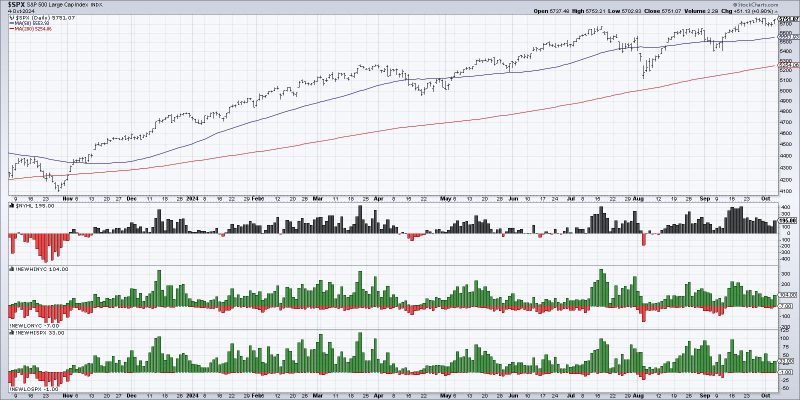In the world of investment, market breadth plays a crucial role in understanding the overall health and direction of the market. Market breadth refers to the number of individual stocks that are participating in a market advance or decline. A market with good breadth indicates that many stocks are moving higher, reflecting broad-based strength. On the other hand, poor market breadth suggests that only a small group of stocks are responsible for driving the market higher, signaling underlying weakness.
One commonly used indicator to assess market breadth is the Advance/Decline (A/D) line. The A/D line plots the difference between the number of advancing stocks and declining stocks over a certain period. A rising A/D line indicates broad participation and bullish market breadth, while a declining A/D line suggests limited participation and bearish breadth.
When market breadth is poor, it may raise concerns about the sustainability of a market rally. A market rally driven by a small group of stocks, known as a narrow market, is often viewed as less stable than a rally supported by a broad array of stocks. If only a handful of stocks are driving the market higher, it can create vulnerability to sharp pullbacks if those few stocks falter.
One potential consequence of poor market breadth is the risk of a market correction. When market breadth is narrow, meaning that only a few stocks are carrying the market higher, the overall market becomes more susceptible to swift and severe corrections if those leading stocks stumble. This lack of breadth can expose the market to increased volatility and downside risk, as investors may rush to exit positions in a limited number of popular stocks, causing a sharp downturn in prices.
In addition, poor market breadth can also indicate underlying problems within the market. If only a small segment of stocks is experiencing positive momentum, while the broader market remains lackluster, it may suggest that investors are increasingly selective and cautious. This selective behavior can lead to an uneven market performance, with some sectors or stocks outperforming while others lag behind, creating a fragmented market environment.
Moreover, poor market breadth can impact investment strategies and portfolio performance. Investors who rely on a diversified approach may face challenges in a market with weak breadth, as the performance of individual stocks may vary significantly. In such conditions, maintaining a balanced portfolio that can weather market fluctuations becomes more challenging, requiring additional attention to risk management and asset allocation.
In conclusion, market breadth is a critical factor in assessing the health and stability of the market. Poor market breadth, characterized by a limited number of stocks driving market gains, can raise concerns about the sustainability of a market rally and increase the risk of market corrections. Investors should closely monitor market breadth indicators, such as the Advance/Decline line, to gauge the level of participation across the market and adjust their investment strategies accordingly to navigate challenging market conditions.
